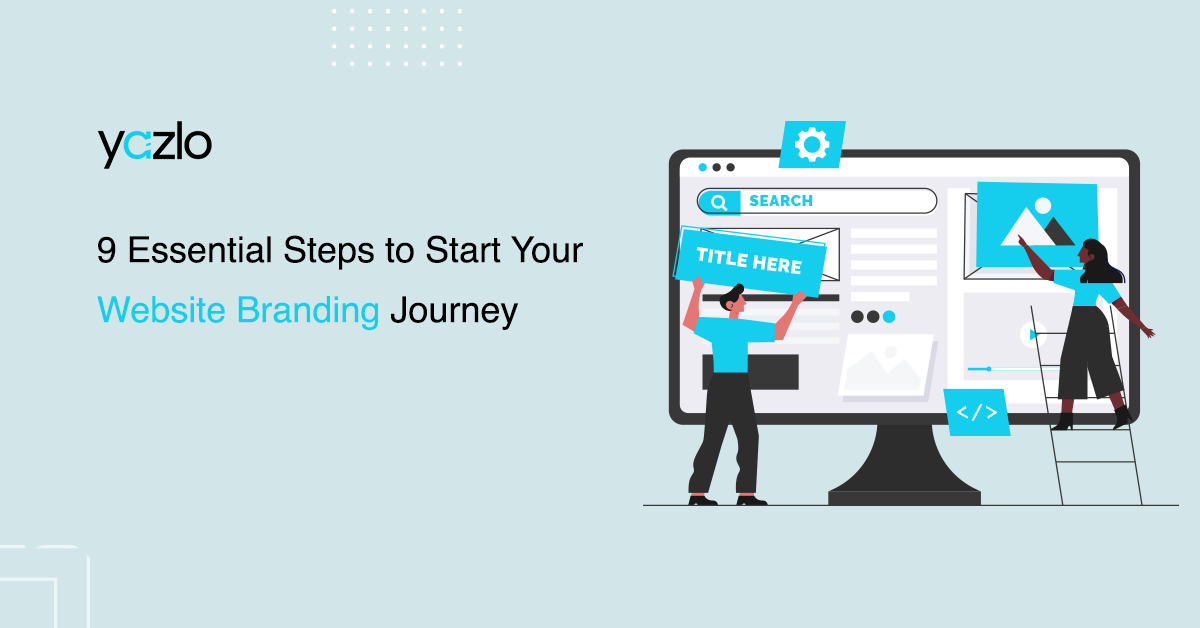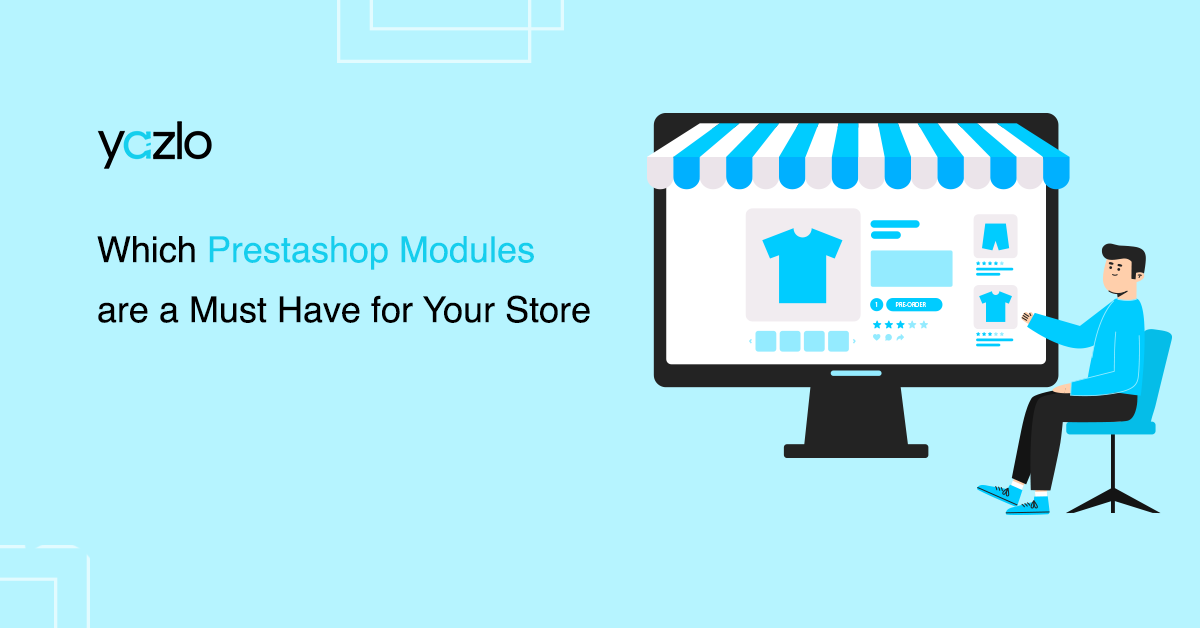In today’s digital age, it is nearly impossible for businesses to survive let alone grow without a robust online presence. When talking about online presence, one of the most critical components is the website. After all, it serves as the virtual face of your business. Therefore, it is imperative that the website make a lasting impression on the target audience. Otherwise, it will be challenging to differentiate it from the competitors.
However, it is imperative to understand that the website is more than just a platform for the target audience to interact with your products and services. The website is an extension of your brand, meaning it should communicate all the elements of your brand effectively. A well-defined brand identity is at the core of any successful business. It acts as a point of differentiation and helps build credibility among your customers.
What businesses need to understand is that branding is much more than visually appealing graphics or fonts. It involves identifying your target audience, understanding it, and then catering to their needs. When browsing your website, the audience must connect with your brand. They must understand what the business represents i.e. your story and values. But doing so is certainly easier said than done.
Most businesses fail to develop a website that truly connects with their audience. Therefore, today’s article will guide you through the process of effective website branding. We will list the top tips that can help you set up a website that not only captures the attention of your audience but fosters feelings of trust. Over time, your business will enjoy a loyal customer base.
Why is Branding Crucial for your Website?
Here’s why branding is crucial for your website:
First Impressions Matter
We are living in the digital age. Long before a customer walks into your store, their buying journey has already started. It begins with a simple online search, meaning your website is the first point of contact between your brand and potential customers. Within the first few seconds of opening your website, a customer will form an opinion about your brand’s quality and professionalism.
Differentiation in a Crowded Space
Suppose a customer wishes to buy furniture for their home office. They will begin their journey with a simple Google search. Now, imagine the number of websites that will appear on the screen against this search result. The internet is flooded with websites offering similar products, services, or information. Strong branding sets you apart from the competition by showcasing what makes your brand unique.
When your website has a clearly defined brand identity, the target audience can clearly understand your brand’s unique value proposition (UVP). It can help them understand why they should prefer your brand over others. Without a robust brand identity, your business will sink into obscurity. It will be quite challenging to stand out in a sea of local and international competitors.
Emotional Connection and Loyalty
Additionally, a brand identity has the power to evoke emotions and instill a strong sense of loyalty among the audience. How? Well, the answer is quite simple. When your website consistently reflects your brand’s values and personality, visitors are more likely to resonate with your message. This emotional engagement has the ability to convert one-time customers to life-long customers and even brand advocates.
Brand Recall and Recognition
Brand recognition is key to success in the digital landscape. A well-branded website can leave a lasting impression on the audience’s mind. They will remember your products or services long after they have completed the purchase or left the purchase. When they encounter your brand’s colors, logo, or tagline elsewhere, they’ll immediately associate it with your website, strengthening your overall brand recall.
Tips for a Website’s Branding
Define Your Brand Identity
The first step is defining your brand identity. What are your organization’s mission, values, and UVP? We highly recommend that you put much effort and thought into this process. If you keep changing them, it can be nearly impossible to create brand recognition for your business. Therefore, it is better to stick to the same mission, values, and UVP. It will make it easier for customers to identify your brand.
Identify Your Target Audience
The second step in website branding is defining the target audience. Irrespective of your business niche, it is imperative to identify who your target audience is and what needs they have. By understanding who your target audience is, it becomes easier to tailor the website’s design and content to align with the audience’s requirements. This will not only increase engagement but also improve conversion rates.
Research your Competitors
If you wish to create a robust brand identity, you need to learn about your competitors. By identifying what they are doing, you can learn about their strategies and gain other valuable insights. This knowledge can be used to improve your own website’s design, functionality, user experience, and content strategy. Another benefit of competitor research is that it can help in staying up to date with the latest developments.
Design a Visually Appealing Logo
Your brand identity is incomplete without a logo. Do not rely upon free online logo makers or hire an amateur freelancer. Instead, we recommend investing all available resources in designing a visually appealing logo. After all, the logo will be visible on the website and all other promotional channels. A perfectly designed logo can enhance the aesthetic appeal of a website and build brand recognition.
When it comes to website branding, the logo serves as the visual representation of your brand. It should be unique, memorable, and instantly recognizable. A professionally designed logo can effectively communicate your brand’s values, personality, and offerings to your target audience.
Set Up an Engaging Theme
Furthermore, a visually appealing website will help complement your logo. The theme must be easy to navigate and create a positive user experience. The color scheme, content placement, and other visuals must be easy to browse. Otherwise, your website’s bounce rate will be considerably higher. Resultantly, it will impact your website’s ranking on the search engine results page.
It is quite common that while browsing a website, one likes the theme. As a business, you should avoid using the same theme as it is without changes. The reason is that it would be unprofessional for a brand to use a stock theme. So, customize it to suit your unique requirements. Refer to our earlier on “How To Find Out What Theme A Website Is Using?” to find a website’s theme.
Create Consistent and Engaging Content
Everyone has heard the phrase “Content is King”. Well, it may sound like a cliche but it is quite true. Content will always remain king. The mediums may keep changing but it does not alter the content’s importance. This content should be aligned with your brand’s voice and values. It should not only communicate your brand identity but also be informative for the audience.
A key tip to remember whenever creating content is that you are doing it for the audience and not the search engines. So, the content should be natural. It means avoiding keyword stuffing and any other technique whose sole purpose is to boost your rankings on the search engines. Every piece should serve a specific purpose and help move your brand forward.
Utilise Social Media to Promote Your Brand
Whether one likes to admit it or not, social media is a powerful medium to promote your brand. The right social media campaign can drive traffic to your website and make it easier for the audience to remember your brand. Just imagine that every time the audience opens their social media profiles, they are shown some form of content promoting your brand.
It will allow you to reach a wider audience at a fraction of the cost as compared to other channels. The best thing about social media is that it allows you to engage directly with the target audience. It helps your brand build a strong connection with your audience, which can translate to loyalty. To get started, create accounts on the major social media platforms (Facebook, X, Instagram, LinkedIn) and integrate them into the website.
Monitor and Analyse your Branding Efforts
More often than not, brands forget about the importance of monitoring their branding efforts. It allows poor strategies to go on for long periods without delivering any results. Therefore, it is imperative that brands keep a close eye on how their branding efforts are performing amongst the audience. The best way to do so is by monitoring website traffic, bounce rate, and even social media engagement.
Continuously Evolve and Adapt your Brand as Needed
Lastly, it is imperative to understand that branding is an ongoing activity. Therefore, as your business grows or undergoes changes, the website branding strategy must change accordingly. Therefore, we recommend regularly reassessing your website’s branding to ensure that it reflects the current situation. For example, your mission or values may evolve over time. The target audience may change as well.
Conclusion
This article talked about the importance of website branding and how to ensure that your website branding brings results. You must ensure consistency when it comes to branding if you wish to achieve long-term success. Lastly, remember that fostering brand loyalty and achieving high brand recognition requires patience.




